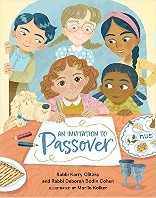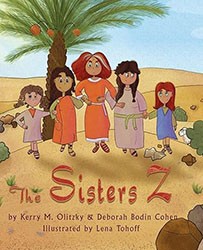An Etrog from Across the Sea tells the story of the Gómez family, eighteenth-century Sephardim living in the British colonies of North America. The patriarch of the family is the historical figure Luis Moises Gómez, a successful merchant. Authors Deborah Bodin Cohen and Kerry Olitzky fictionalize other parts of Gómez’s biography to create the characters of his children and grandchildren. Stacey Dressen McQueen’s illustrations, inspired by traditional designs and fabric art, paint a lively picture of Jewish American life long ago.
The book opens with a letter from Judah, Luis’s son, to his wife and children. On the island of Corsica, he has found an unbelievable treasure: an orchard of etrog trees. Usually, this essential Sukkot fruit is purchased from a market or ordered through a synagogue, not discovered in its place of origin.
When Leah, Aaron, and their mother board a stagecoach to New York to meet their father on his return, their excitement begins to build. However, Papa may have encountered pirates or a dreadful storm on the way. The narrative takes a surprising turn when Mama informs them, the day after Yom Kippur, that they cannot wait any longer and need to return home.
Specific details enhance the story. Cohen incorporates a number of holidays into the book, capturing the vibrancy of the communal life of Jews in rural New York. Before he left New York City, Luis gave his granddaughter a precious item: a silver cup made to hold mustard that had been repurposed as an etrog holder. This demonstrates the adaptability of Jewish observance over the ages and in different lands.
As Leah, Aaron, and their mother anticipate Papa’s return, they each participate in decorating the sukkah. Leah hands branches to her mother and brother, who place them carefully on the roof of the temporary structure. Tools and rope rest beneath the sukkah, suggesting that lots of building took place in advance. Aaron is dressed in knee breeches and silver-buckled shoes, while Leah wears a cape tied at the neck, and their mother sports full, lacy sleeves.
When Papa returns, the family gathers around the Yom Tov candles. The etrog standing upright in its silver mustard container is a reminder that every observance has its own unique flavor.
This highly recommended book includes an author’s note explaining the book’s historical content.
Emily Schneider writes about literature, feminism, and culture for Tablet, The Forward, The Horn Book, and other publications, and writes about children’s books on her blog. She has a Ph.D. in Romance Languages and Literatures.





